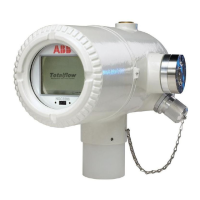If the drop is less than 0.1 V, check the termination panel to the analytical
processor cable for pinched or exposed insulation. Also, check the feed-
through auxiliary heater cable for similar damage.
8) Was the damaged cable found? If yes, replace the appropriate cable using
instructions in Maintenance
.
If not, use instructions in Replacing Analytical Module, and replace the
module. Skip to step 10.
9) Reinstall the analytical module.
10) Reinstall the digital controller assembly.
11) If disconnected during a procedure, reconnect the J1 power supply connector to
the termination panel. It may require 10-60 seconds for the processors in the
NGC to fully boot and for the NGC to start drawing normal to full power.
However, under normal operation, the NGC should never, at any time, draw
current beyond its rated values.
12) Return to the equipment isolation test.
6.5.5 Charger Circuit Test
If the system setup includes a battery pack, solar panel or AC charger/power
supply connected to the optional equipment enclosure, and the unit’s battery is not
staying charged, test the battery pack, AC charger/power supply or the solar
panel.
The following instructions contain the steps required to perform the circuit testing.
6.5.5.1 Things to consider
The following list points to other troubleshooting procedures that the user may
want to consider as well:
• Solar Panel Troubleshooting Test
• AC Charger/Power Supply Troubleshooting Test
6.5.5.2 Instructions
1) Disconnect power from the AC charger/power supply located in the
optional enclosure.
2) Replace the battery with a known good battery using the
Replacing Lithium
Battery Maintenance.
3) Reconnect the power to the charger/supply. If the battery pack is charged
through an AC charger, skip to step 5; otherwise, continue to step 4.
4) Measure the solar panel charging voltage at the charger regulator using a DMM
connecting the (+) and (-) leads to the (+) and (-) solar panel wires. Loaded
voltage should be greater than or equal to the specification listed in Table 6–3
. If
the voltage is within range, the battery was bad.
If the loaded voltage is not above the minimum, perform the Solar Panel
Troubleshooting Test found later in this chapter.
5) If the unit uses an AC charger, perform the AC Charger/Power Supply
Troubleshooting Test found later in this chapter.
6) If all other testing to this point has not located the error, return to Figure 6-2,
Power Troubleshooting flowchart and continue.

